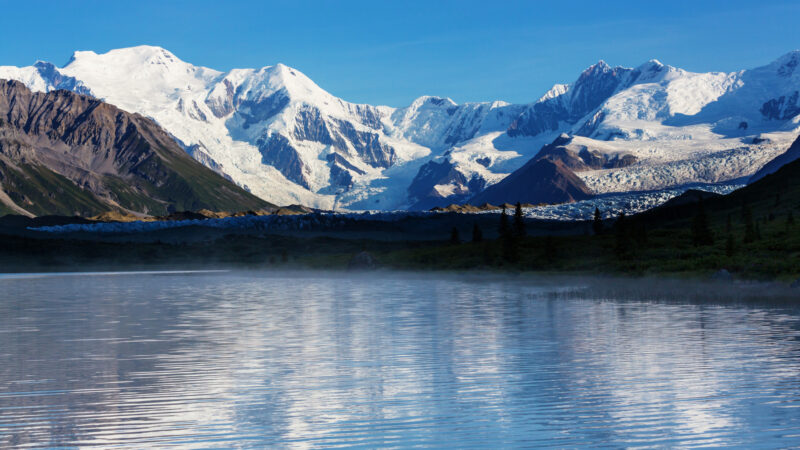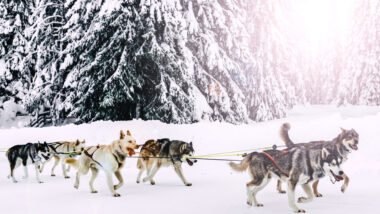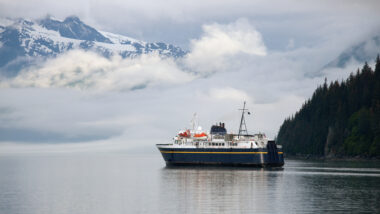Table of Contents Show
When you think of the mountains in Alaska, what first comes to mind? We guess it’s probably Denali. But if that’s the only peak you visit during your road trip, you’re missing out on seeing more rugged beauty.
If you visit Alaska, make sure to check out other sights, including the incredible Wrangell Mountains.
Today, we’ll look more closely at the Wrangell Mountains, how big they are, where they are located, and what you can do there.
They’re about a five- to six-hour drive from Denali towards the southeastern coast of Alaska. But they’re well worth the visit. Let’s dive in!
Wrangell Mountains Location
The Wrangell Mountains sit in southeastern Alaska. The Denali Visitor Center lies about 247 miles northwest of the Copper Center Visitor Center at Wrangell-St. Elias National Park and Preserve.
Most of the Wrangell Mountains lie within this national park. Anchorage lies less than 200 miles southwest, and Tok lies about 150 miles north.
The Wrangell Mountains sit just northwest of the Saint Elias Mountains.
The Wrangell-St. Elias National Park and Preserve is the largest national park in the United States, covering 13.2 million acres.

How the Wrangell Mountains Got Their Namesake
The Wrangell Mountains were named after Baron Ferdinand Friedrich Georg Ludwig von Wrangel, aka Ferdinand von Wrangel.
Ferdinand von Wrangel was born into nobility in Pskov, Russia. He was a Baltic German explorer and officer in the Imperial Russian Navy.
In 1829, he was appointed governor of the North American settlements, present-day Alaska. He was later promoted to admiral and became the Minister of the Navy in the mid-1850s.
During his retirement, he wrote about the people of northwestern America and his various expeditions. He didn’t think Russia should have sold Alaska to the United States. Wrangel died in 1870.
Wrangel Island in the Arctic is named after him. Wrangell Island off the southeastern Alaskan archipelago is also named after him.
The town of Wrangell, Fort Wrangel, Cape Wrangell, Mount Wrangell, and the USS Wrangell were all named in honor of this important explorer.
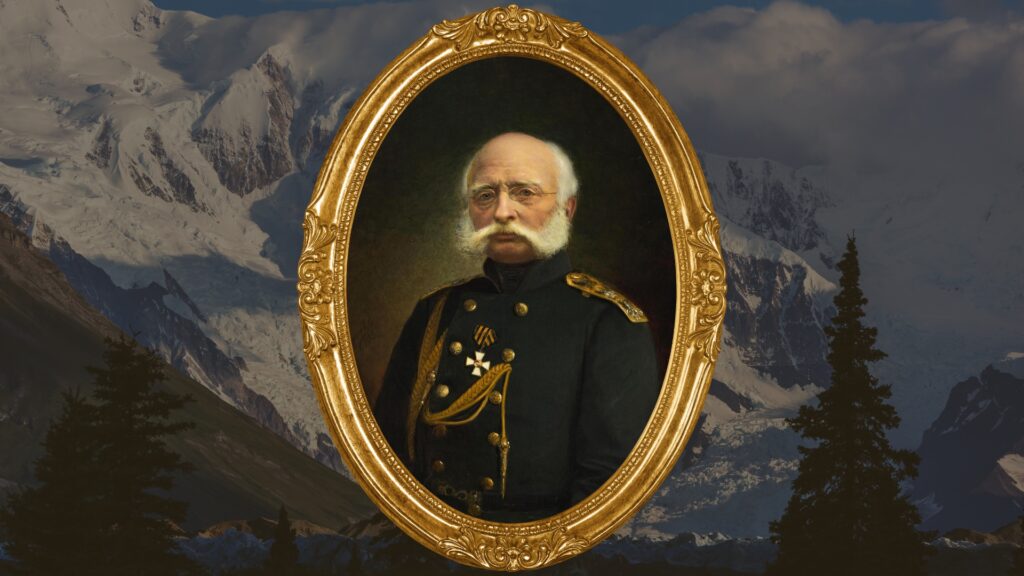
How Big Are the Wrangell Mountains?
Denali is the tallest mountain in North America. But two of the top ten tallest U.S. mountains are in the Wrangell Mountains. Mount Blackburn stands at 16,390 feet, and Mount Sanford stands at 16,237 feet above sea level.
These are also the second and third-highest volcanoes in the U.S. The Wrangell Mountains are of volcanic origin, although Mount Wrangell is the only remaining active volcano. This massive shield volcano sits 14,163 feet above sea level.
The Wrangell Mountains include 12 peaks over 13,000 feet. These 12 peaks make the list of the 80 tallest mountains in the United States. Mount Jarvis, Atna Peaks, Parka Peak, and Regal Mountain are some of the most notable peaks in this mountain range.
But the Wrangell Mountains aren’t just home to some of the tallest peaks in America. The entire range stretches 100 miles long and 60 miles wide.
Learn More: If you like big mountains and you cannot lie, check out The Tallest Mountains in the U.S.!
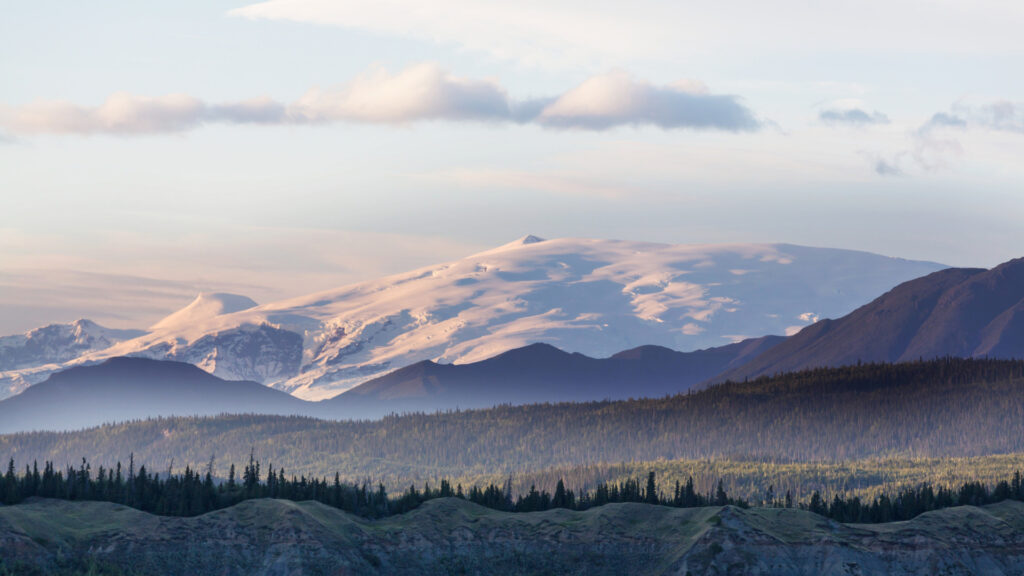
Are Any of the Wrangell Mountains Active Volcanoes?
Currently, the only active volcano in the Wrangell Mountains is Mount Wrangell. Much of the Wrangell Mountains sits in the Wrangell Volcanic Field, which extends for approximately 160 miles across southcentral Alaska into the Yukon Territory.
Unlike the volcanoes in Hawaii, Mount Wrangell is almost entirely covered by an ice field. The largest glacier, Nabesna Glacier, is the longest valley glacier in North America and the world’s longest interior valley glacier. It spans 53 miles.
Although Mount Wrangell hasn’t erupted in over 100 years, the geothermal heat released from the volcano increased for about 30 years during the last century.
The heat even melted the ice around the craters. However, the heat has decreased over the last 40 years, and ice has accumulated again.
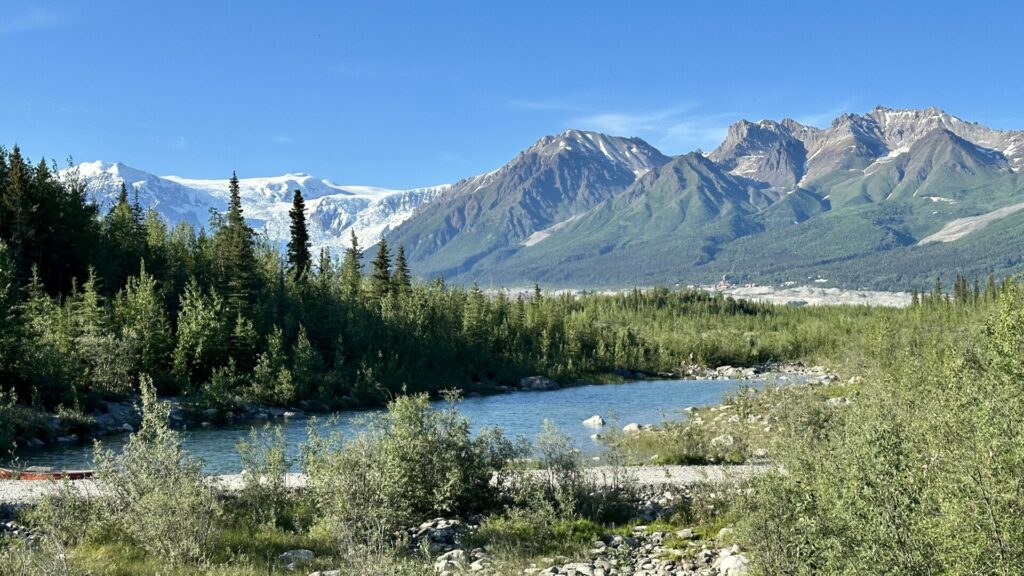
About the Wrangell Mountains Glaciers
According to the National Park Service, there are over 3,100 glaciers in Wrangell-St. Elias National Park covering 35% of the land. The Bagley Icefield measures 127 miles long, 6 miles wide, and up to 3,000 feet thick.
The Malaspina Glacier would cover the entire state of Rhode Island, North America’s largest piedmont glacier. The Hubbard Glacier is North America’s largest tidewater glacier at 76 miles long and 7 miles wide.
Keep in Mind: If you want to get up close and personal with a glacier in Alaska, we can’t recommend going on a Glacier JetSki Adventures tour enough!
What Is the Kennecott Mine?
The Kennecott Mines National Historic Landmark sits within Wrangell-St. Elias National Park. This small town is one of the best remaining examples of copper mining from the 20th Century.
At the Kennecott Mines, visitors can walk around the interpretive exhibits at the historic structures. There’s the General Store, Post Office, Blackburn School, Recreation Hall, Railroad Depot, Power Plant, and more places to learn about the history of Kennecott.
The National Park Service is currently renovating and restoring many of the old buildings in Kennecott to protect the historic integrity of the mill town. They’ve partnered with the local community and Friends of Kennicott for this preservation project.
Read On: Read about Kennicott & McCarthy: Alaska’s Weirdest Towns to learn why we loved this area so much!
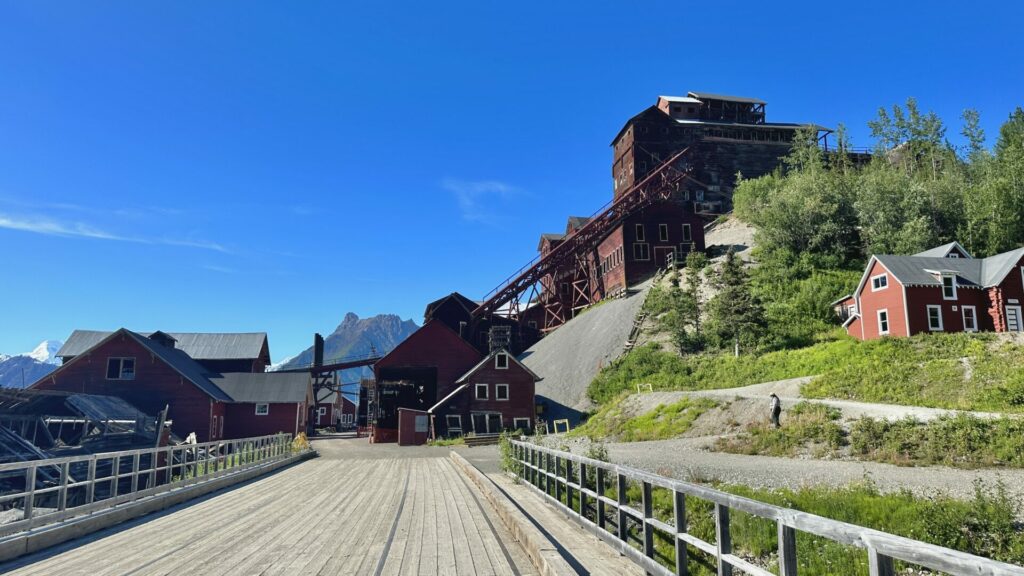
About Wrangell-St. Elias National Park and Preserve
Wrangell-St. Elias National Park and Preserve — where much of the Wrangell Mountain range lies — is the largest national park in the United States.
It covers 13.2 million acres from the sea up to over 18,000 feet. You could fit six Yellowstones inside the boundaries of this national park.
It’s rugged but beautiful with its giant glaciers and towering peaks. This national park not only includes the Wrangell Mountains but also the St. Elias Mountains, Chugach Mountains, and the Alaska Range.
Keep in Mind: Do you love our national parks as much as we do? Then you need to read about The Best National Parks in the USA!
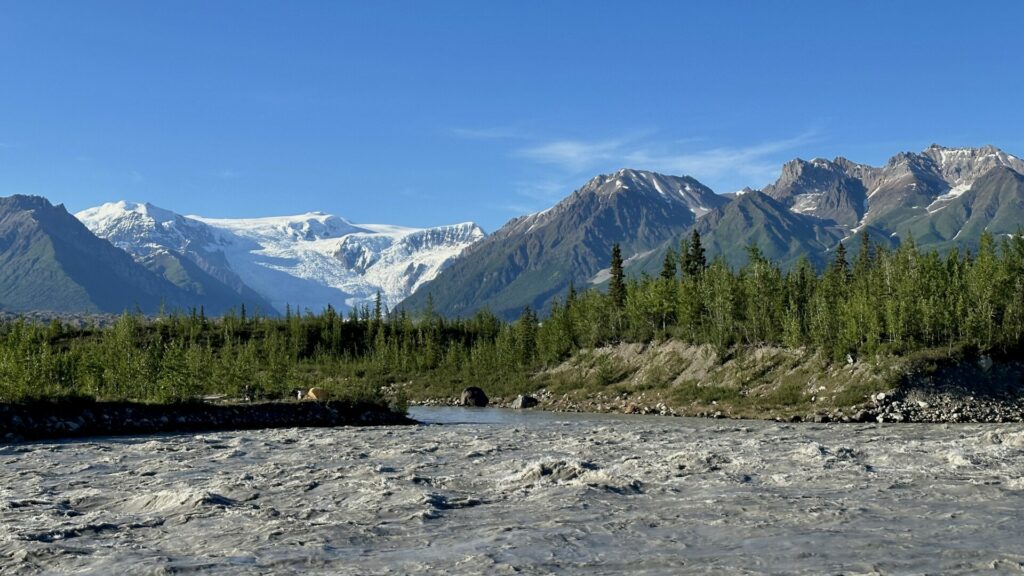
Things to Do in Wrangell-St. Elias National Park and Preserve
Many people enjoy the top-rated flightseeing tours and boat cruises, as well as mountaineering, floating, and fishing. Interpretive programs and guided walks are offered from mid-May to mid-September, providing an excellent way to learn more about the history and geology of the region.
Because Wrangell-St. Elias National Park is also a national preserve, you can go hunting and trapping. You can also enjoy wildlife viewing at this national park.
It has one of North America’s largest concentrations of Dall sheep. You might also see moose, grizzly bears, black bears, mountain goats, caribou, and even two herds of transplanted bison.
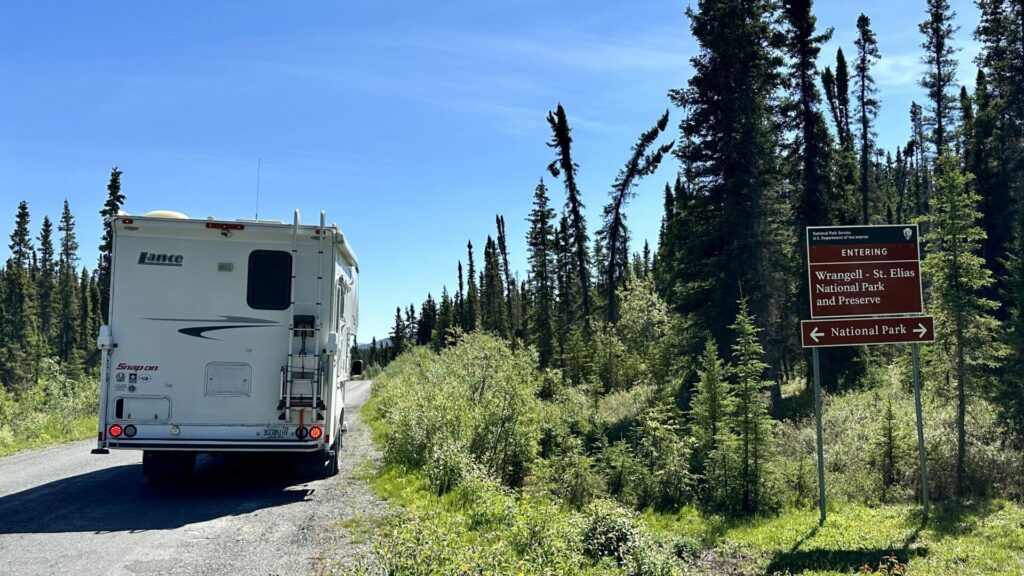
Visit Alaska’s Largest National Park at the Wrangell Mountains
The Wrangell Mountains might not be as well known as the Alaskan Range, where Denali reaches the sky. But this mountain range is also full of towering, rugged peaks and ice fields that seem never to end. This part of Alaska is a wonder and worth a visit!
So the next time you plan a road trip to the Last Frontier, consider visiting the Wrangell Mountains and the national park.
Stand in awe at the majesty of creation. Soak in the magnitude and beauty of this Alaskan wilderness.
Have you ever visited the Wrangell Mountains in southeastern Alaska?




